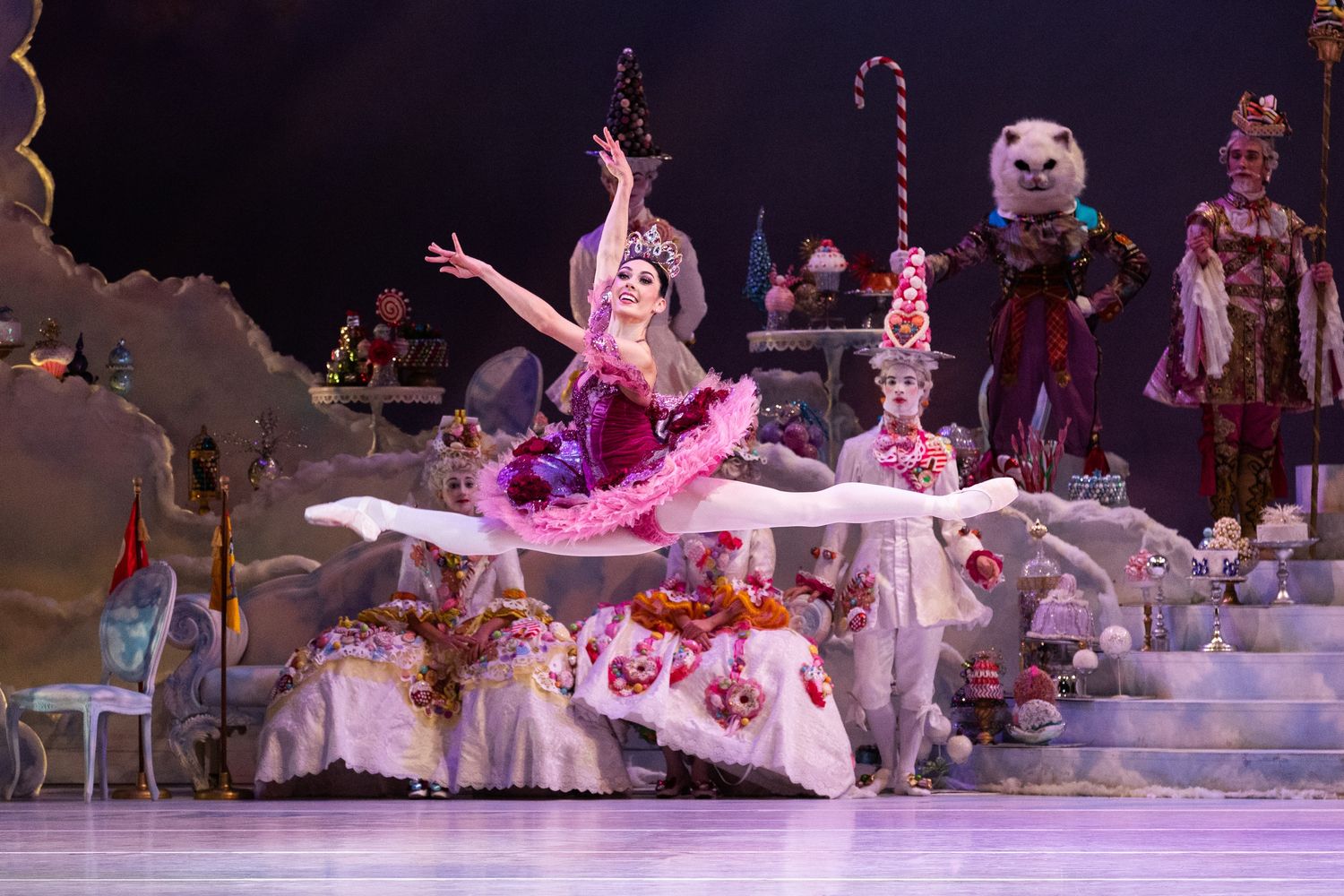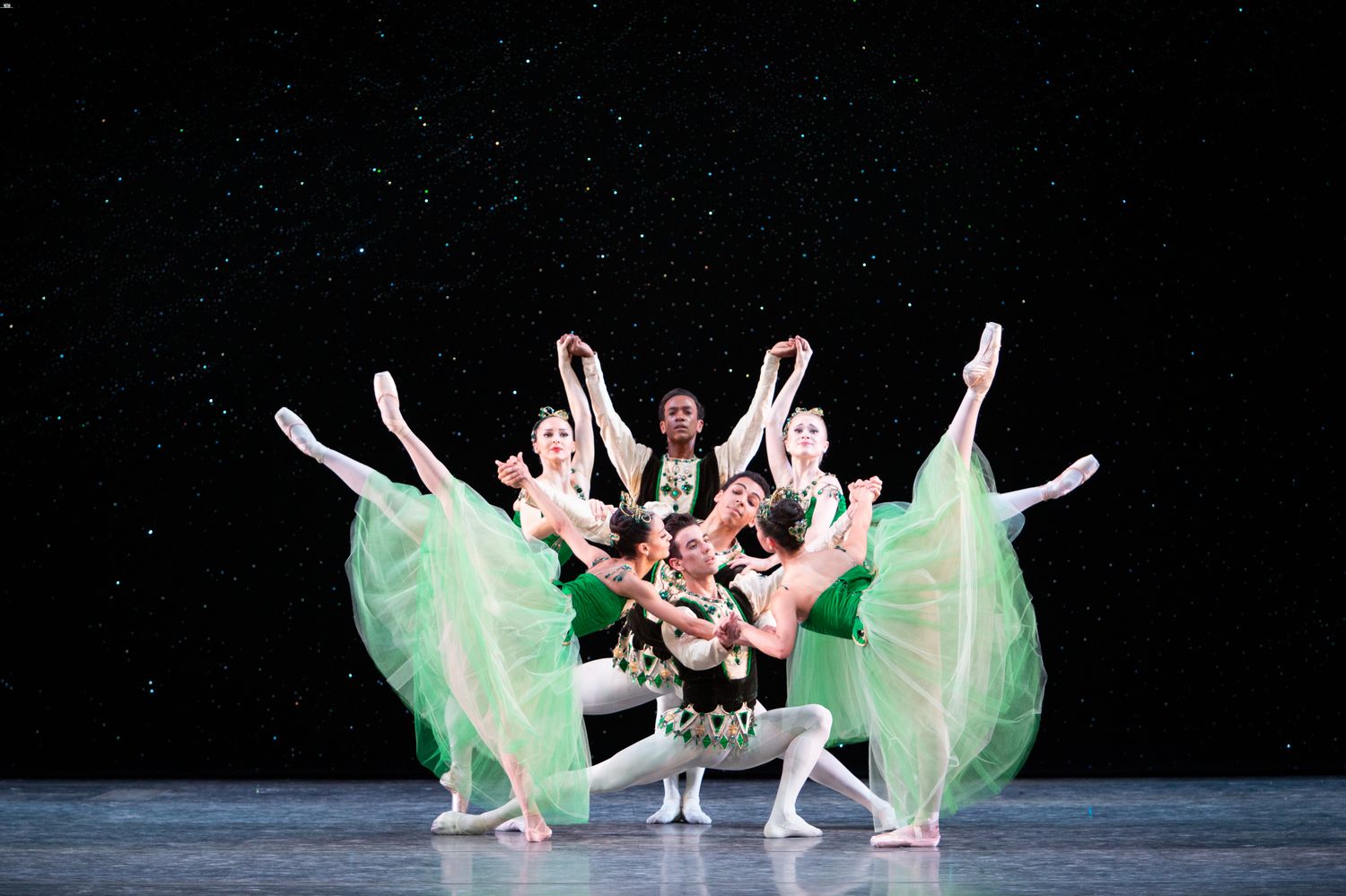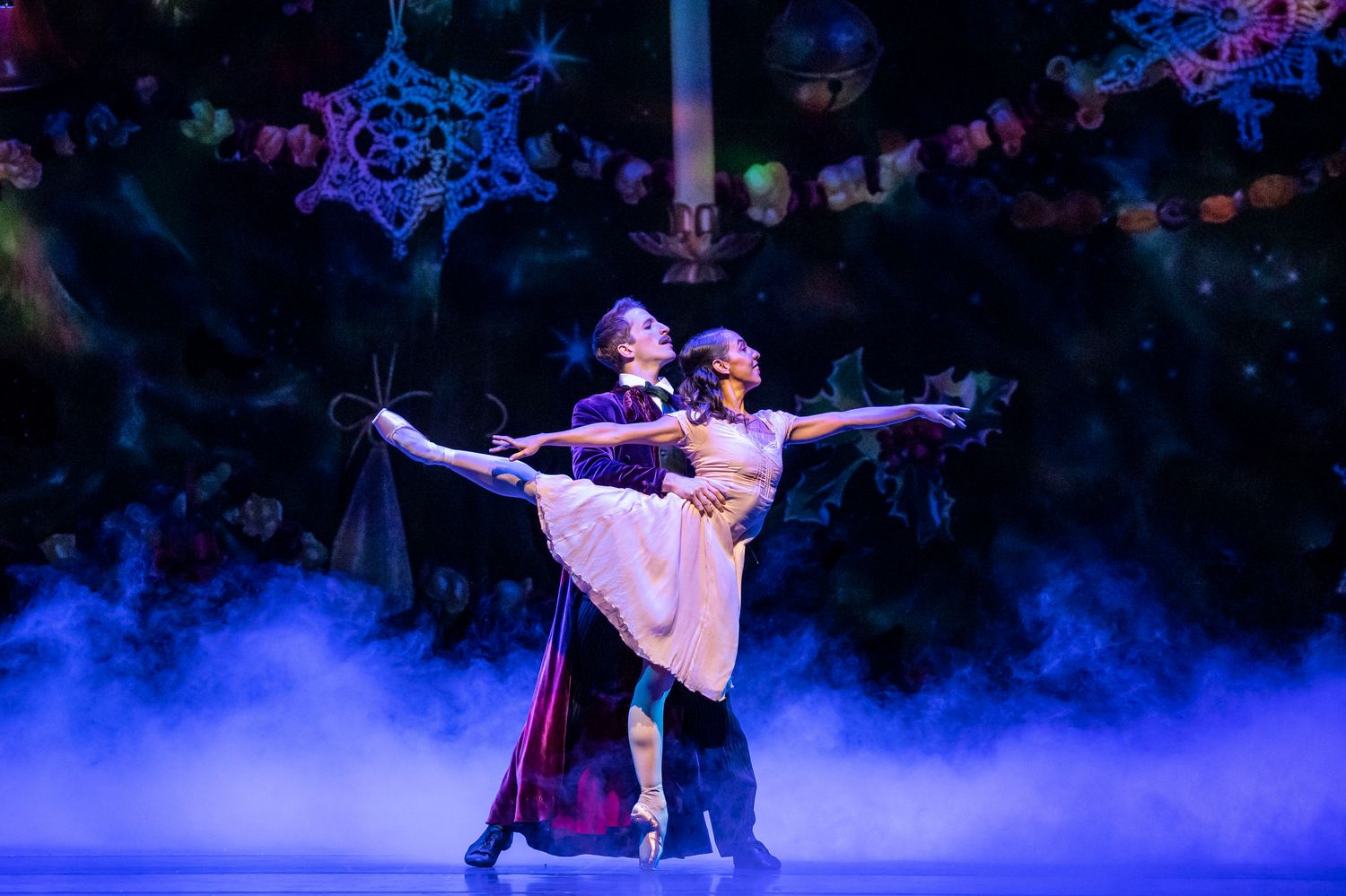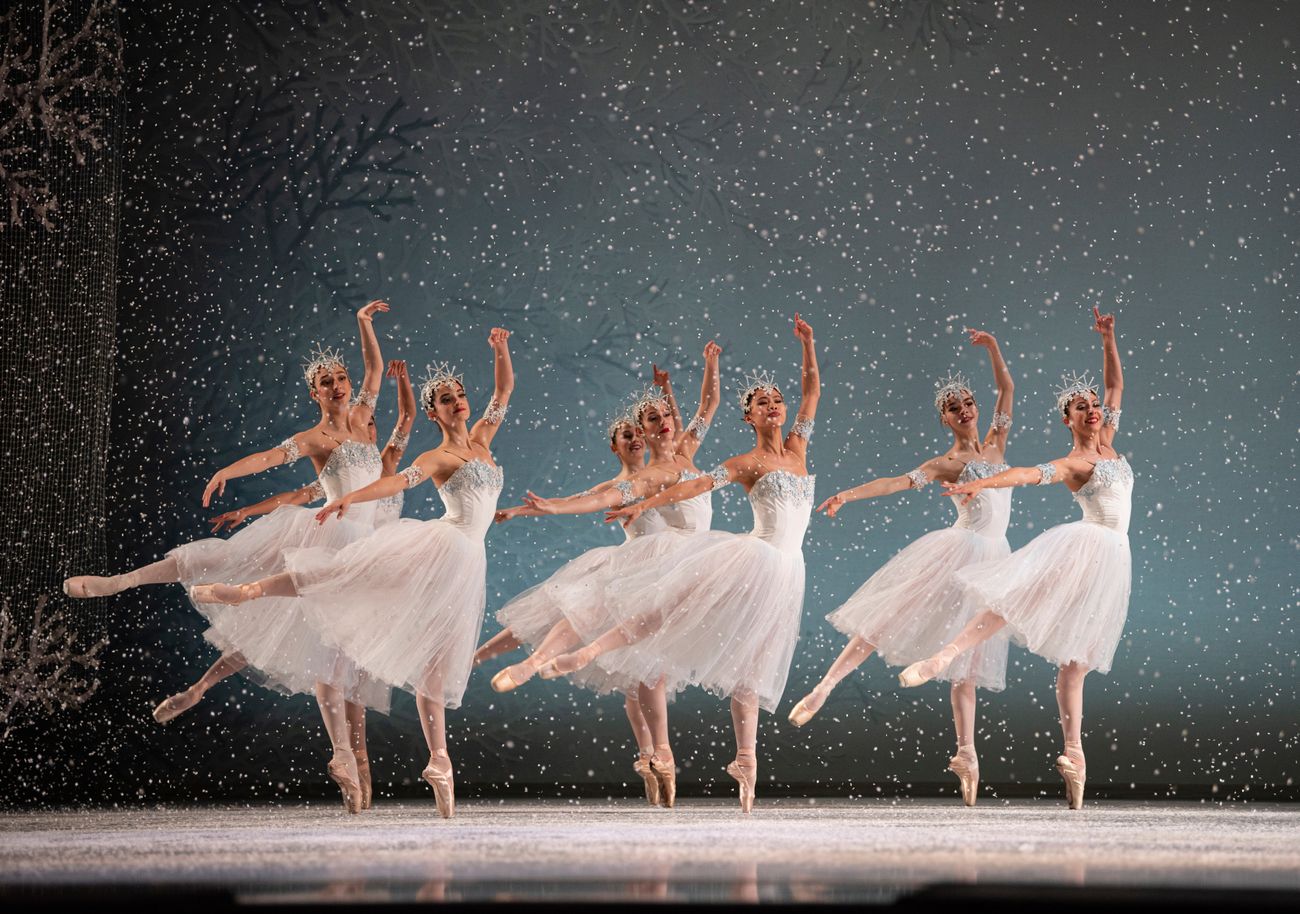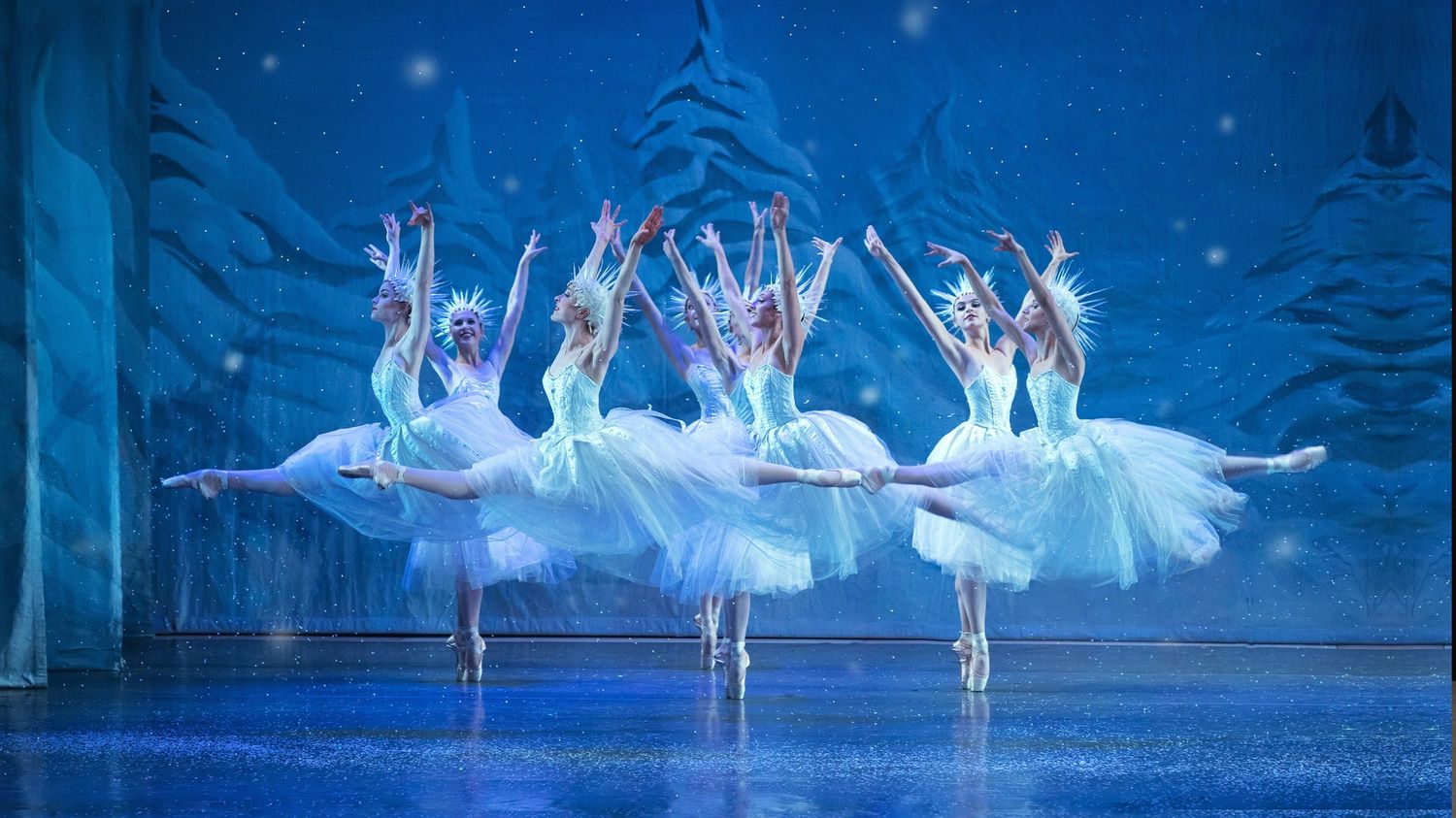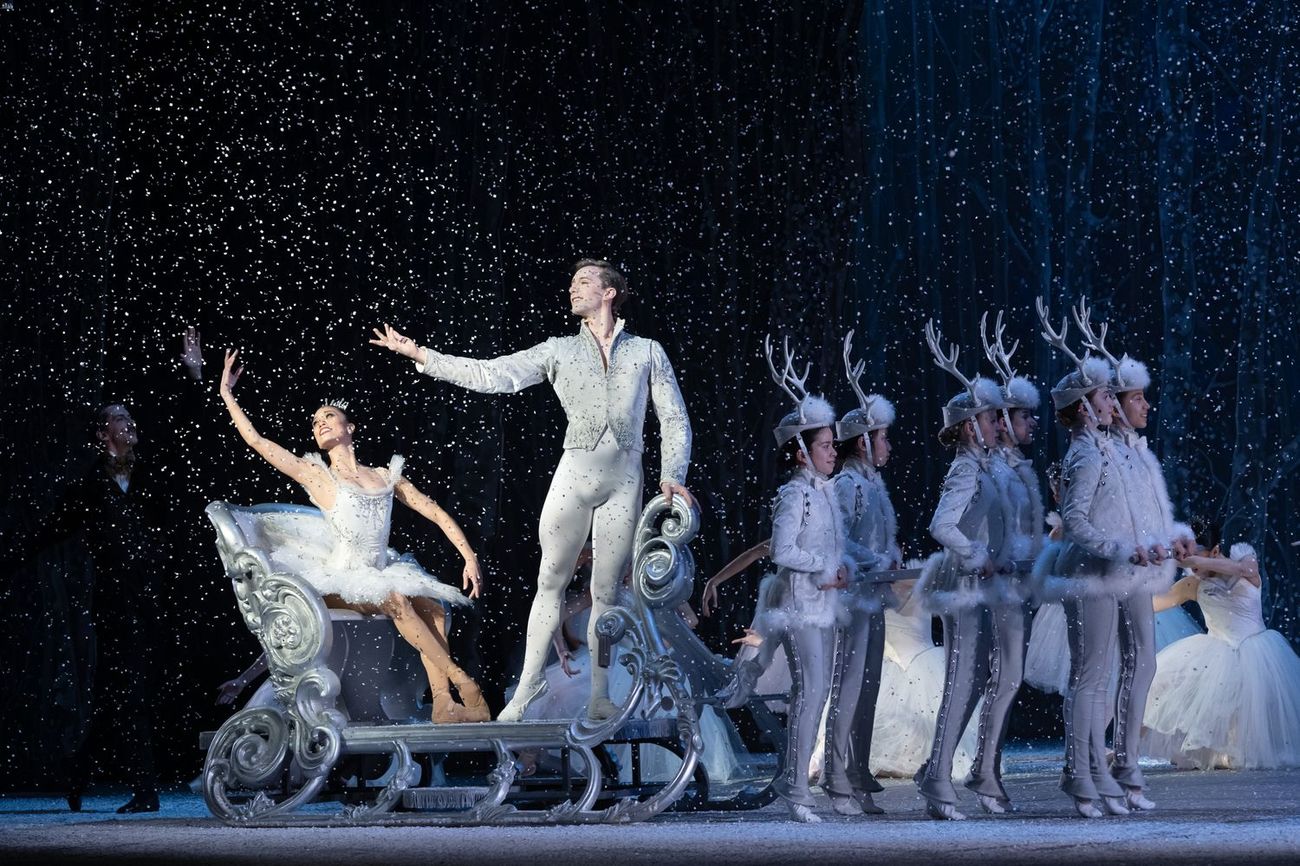Home>Events & Info>Ballet>What Is The Story Of The Nutcracker Ballet


Ballet
What Is The Story Of The Nutcracker Ballet
Modified: January 22, 2024
Discover the enchanting story of the Nutcracker Ballet, a timeless classic in the world of ballet. Dive into a magical world filled with exquisite choreography, captivating music, and dazzling performances.
(Many of the links in this article redirect to a specific reviewed product. Your purchase of these products through affiliate links helps to generate commission for AudioLover.com, at no extra cost. Learn more)
Table of Contents
- Introduction
- Origins of the Nutcracker Ballet
- Adaptation of E.T.A. Hoffmann’s “The Nutcracker and the Mouse King”
- Premiere and Early Performances
- Plot Synopsis of the Nutcracker Ballet
- Iconic Characters in the Nutcracker Ballet
- Tchaikovsky’s Musical Score
- Ballet Productions and Interpretations
- The Nutcracker’s Popularity and Holiday Tradition
Introduction
Ballet has the power to transport us to magical worlds, where graceful movements and captivating storytelling come together. One of the most beloved and enchanting ballets of all time is “The Nutcracker.” This timeless classic has captured the hearts of audiences worldwide and has become a cherished holiday tradition for many.
The Nutcracker ballet is a mesmerizing blend of music, dance, and theatrical storytelling. It tells the story of a young girl named Clara who embarks on a thrilling adventure on Christmas Eve. After receiving a nutcracker doll as a gift, Clara’s vivid imagination takes her on a journey filled with brave toy soldiers, a magical kingdom ruled by a Sugar Plum Fairy, and a battle against the fearsome Mouse King.
Originally created as a two-act ballet in 1892 by Russian composer Pyotr Ilyich Tchaikovsky, The Nutcracker has become a staple in the world of ballet and has been reimagined and performed by countless ballet companies around the globe. Its delightful melodies, intricate choreography, and enchanting storyline have made it an enduring masterpiece.
The Nutcracker ballet holds a special place in the hearts of both ballet enthusiasts and those new to the art form. Its combination of vibrant costumes, stunning sets, and mesmerizing dance sequences creates an immersive experience that captivates viewers of all ages. Whether experiencing it for the first time or revisiting it as a holiday tradition, The Nutcracker never fails to ignite the imagination and bring joy to its audience.
As we delve deeper into the story and legacy of The Nutcracker ballet, we will uncover the origins of this beloved production, the adaptations from E.T.A. Hoffmann’s original story, the iconic characters that bring the ballet to life, and the enduring popularity of Tchaikovsky’s musical score. Get ready to be transported to a world of magic and wonder as we explore the captivating story of The Nutcracker ballet.
Origins of the Nutcracker Ballet
The Nutcracker ballet traces its origins back to the 19th century, rooted in the fantastical tale of “The Nutcracker and the Mouse King” written by E.T.A. Hoffmann in 1816. Hoffmann’s story, a blend of fantasy and adventure, captivated audiences with its whimsical narrative.
In 1891, Marius Petipa, the renowned ballet master of the Imperial Ballet in St. Petersburg, approached Pyotr Ilyich Tchaikovsky to compose the music for a new ballet based on Hoffmann’s story. Tchaikovsky eagerly embraced the project and began working on the score, bringing the enchanting characters and their world to life through his music.
The ballet premiered on December 18, 1892, at the Imperial Mariinsky Theatre in St. Petersburg, under the title “The Nutcracker and the Mouse King.” Unfortunately, the initial reception was mixed, with critics and audiences failing to fully appreciate the intricate choreography and the magic of the production.
However, the ballet continued to evolve over the years. After Petipa’s retirement, his assistant, Lev Ivanov, took over the choreography and made significant changes to the second act, including the addition of the iconic “Dance of the Sugar Plum Fairy” and the “Waltz of the Flowers.” These additions, along with Tchaikovsky’s enchanting score, contributed greatly to the eventual success of the ballet.
It was after Tchaikovsky’s death in 1893 that The Nutcracker began to gain popularity beyond Russia. Ten years later, in 1903, the ballet made its way to the United States, where it was performed by the Russian Imperial Ballet in New York City. However, it was not until the 1950s and 1960s that The Nutcracker gained popularity in America, becoming a beloved holiday tradition for families across the country.
Today, The Nutcracker has become a staple in the repertoire of ballet companies worldwide, with countless renditions and interpretations being staged every year. Its enduring appeal can be attributed to the timeless themes of imagination, the power of dreams, and the magic of the holiday season, which resonate with audiences of all ages.
Adaptation of E.T.A. Hoffmann’s “The Nutcracker and the Mouse King”
The Nutcracker ballet is an adaptation of the original story written by German author E.T.A. Hoffmann. Titled “The Nutcracker and the Mouse King,” Hoffmann’s tale follows the adventures of a young girl named Marie and her beloved nutcracker doll.
In Hoffmann’s story, Marie receives a nutcracker as a Christmas gift from her godfather Drosselmeyer, a mysterious and eccentric toymaker. As the clock strikes midnight, Marie embarks on a magical journey, where her nutcracker comes to life and battles against the Mouse King and his army of mice.
The ballet adaptation, however, simplifies and refines the storyline, focusing primarily on the fantastical dream of Clara, the ballet’s central character. Clara’s dream encompasses her attending a festive Christmas Eve party, the battle between the Nutcracker and the Mouse King, and her journey to the Land of Sweets.
While the overall narrative remains faithful to the essence of Hoffmann’s story, the ballet version introduces several new elements and characters. One notable addition is the character of the Sugar Plum Fairy, who becomes a central figure in Clara’s dream. The Sugar Plum Fairy, with her elegance and grace, rules over the Land of Sweets and acts as a guide for Clara throughout her journey.
The ballet adaptation also emphasizes the role of Clara’s imagination, highlighting her ability to escape reality and enter a magical realm. This theme of imagination and the power of dreams resonates deeply with audiences, as it symbolizes the transformative and transcendental nature of ballet itself.
Although the ballet adaptation deviates from certain aspects of Hoffmann’s original story, it captures the essence of the tale and celebrates the joy, beauty, and wonder that the holiday season brings. It combines the elements of fantasy, adventure, romance, and enchantment, creating a timeless and captivating experience for ballet enthusiasts around the world.
Through the skillful choreography, mesmerizing music, and intricate stage designs, the adaptation of “The Nutcracker and the Mouse King” has become one of the most beloved and iconic ballet productions of all time. Its enduring popularity speaks to the universal appeal of its themes and the timeless magic that ballet can evoke.
Premiere and Early Performances
The premiere of The Nutcracker ballet took place on December 18, 1892, at the Imperial Mariinsky Theatre in St. Petersburg, Russia. The performance was part of a double-bill with Tchaikovsky’s opera “Iolanta.” Unfortunately, the initial reception of The Nutcracker was lukewarm, with critics and audiences failing to fully appreciate the ballet’s enchanting qualities.
Despite the initial setback, The Nutcracker continued to be performed throughout the following years. It was during this time that Petipa’s assistant Lev Ivanov played a significant role in shaping the ballet. After Petipa’s retirement due to illness, Ivanov took over the choreography and made important revisions, particularly to the second act of the ballet.
Under Ivanov’s guidance, iconic scenes like the “Dance of the Sugar Plum Fairy” and the “Waltz of the Flowers” were added. These mesmerizing sequences, set to Tchaikovsky’s beautiful compositions, showcased the ballet’s enchanting and ethereal qualities.
Despite the changes, The Nutcracker remained a relatively obscure ballet. It was not until the mid-20th century, particularly in the United States, that the ballet gained widespread popularity. In 1944, the San Francisco Ballet presented the first full-length performance of The Nutcracker in the United States. Choreographed by Willam Christensen, this production sparked interest and appreciation for the ballet.
Another pivotal moment in The Nutcracker’s history occurred in 1954 when George Balanchine choreographed a new version for the New York City Ballet. Balanchine’s production would go on to become one of the most revered and influential interpretations of the ballet. His distinctive choreography and imaginative staging catapulted The Nutcracker to become an annual holiday tradition in the United States.
The Nutcracker’s popularity continued to soar as more ballet companies around the world adopted and staged their own productions of the beloved ballet. It has become a cherished annual tradition, particularly during the holiday season, with families flocking to theaters to witness the enchanting tale unfold.
Today, The Nutcracker remains one of the most frequently performed ballets worldwide, with countless interpretations and adaptations being staged by ballet companies of all sizes. From small community productions to grand spectacles in renowned theaters, every performance offers a unique interpretation of this magical ballet. The enduring appeal and continued success of The Nutcracker is a testament to its universal power to captivate audiences young and old.
Plot Synopsis of the Nutcracker Ballet
The Nutcracker ballet tells the enchanting story of a young girl named Clara who ventures into a world of fantasy and wonder on Christmas Eve. The ballet unfolds in two acts, each filled with captivating characters, mesmerizing dances, and a touch of holiday magic.
The first act opens in Clara’s home, where she eagerly awaits the arrival of her family and friends for a delightful Christmas party. Among the guests is the mysterious Drosselmeyer, Clara’s godfather and a skilled toymaker. Drosselmeyer presents Clara with a special gift, a nutcracker doll, which immediately captures her imagination.
As the clock strikes midnight, Clara is transported into a world of enchantment. The Christmas tree grows to an immense size, and the nutcracker doll comes to life, leading an army of toy soldiers in a fierce battle against the Mouse King and his mouse minions. Just as it seems that all hope is lost, Clara intercedes and saves the nutcracker, breaking the curse placed upon him.
As a token of gratitude for Clara’s bravery, the nutcracker is transformed into a handsome prince. Together, they embark on a magical journey to the Land of Sweets, ruled by the Sugar Plum Fairy. They are greeted by a delightful array of characters representing different confections and treats, each performing their signature dances to honor the visitors.
Throughout their visit to the Land of Sweets, Clara and the Prince are entertained by a series of mesmerizing dances, including the energetic Russian Trepak, the graceful Waltz of the Flowers, and the iconic Dance of the Sugar Plum Fairy. The Grand Pas de Deux, performed by the Sugar Plum Fairy and the Prince, serves as a grand finale, showcasing the ballet’s beauty and virtuosity.
As the journey comes to an end, Clara finds herself back in her home, unsure if it was all just a dream. She clings to her precious nutcracker doll, cherishing the memories of her extraordinary adventure. The ballet concludes with Clara awakening on Christmas morning, surrounded by her loved ones, and treasuring the magic she experienced.
The plot of The Nutcracker ballet is not only a magical journey through Clara’s imagination but is also a celebration of the joy and wonder of the holiday season. The timeless story, vibrant characters, and exquisite choreography have captivated audiences for generations, making The Nutcracker a beloved holiday tradition worldwide.
Iconic Characters in the Nutcracker Ballet
The Nutcracker ballet is known for its array of iconic and enchanting characters, each playing a significant role in bringing the story to life. From Clara and the Prince to the whimsical inhabitants of the Land of Sweets, the ballet showcases a diverse cast of characters that captivate audiences with their charm and grace.
1. Clara: The central protagonist of the ballet, Clara is a young girl with a vivid imagination. Her journey into the magical realm of the Nutcracker and her unwavering bravery in the face of the Mouse King’s army make her a beloved character.
2. Nutcracker/Prince: The Nutcracker begins as a gift to Clara but transforms into the Prince after Clara saves him from the Mouse King. This dashing and valiant character guides Clara through her dreamlike adventure and brings a touch of romance to the ballet.
3. Drosselmeyer: Clara’s godfather, Drosselmeyer, is a skilled toymaker with an air of mystery. He presents Clara with the nutcracker and serves as the catalyst for the magical events that unfold throughout the ballet.
4. Mouse King: The Mouse King is the main antagonist of the ballet. With his army of mice, he battles the Nutcracker in a dazzling showdown. Despite his villainous nature, the Mouse King adds excitement and tension to the plot.
5. Sugar Plum Fairy: The ethereal and graceful Sugar Plum Fairy is the ruler of the Land of Sweets. She welcomes Clara and the Prince and orchestrates a grand display of dance and celebration, culminating in the iconic “Dance of the Sugar Plum Fairy.”
6. Dewdrop Fairy: A prominent solo role in the ballet, the Dewdrop Fairy leads the Waltz of the Flowers, one of the most dazzling and visually stunning scenes. Her graceful movements and ethereal presence add an extra layer of magic to the production.
7. Snow Queen and Snowflakes: In the enchanting Snow Scene, the Snow Queen takes center stage as she leads a group of snowflakes in a breathtaking dance. The Snowflakes, with their delicate and synchronized movements, create a mesmerizing winter wonderland.
These iconic characters, along with a colorful ensemble of dolls, toy soldiers, angels, and various sweets personifying different confections, come together to create a whimsical cast that adds depth and enchantment to The Nutcracker ballet. Each character brings their unique charm and talent, delighting audiences and making the production a timeless and cherished experience.
Tchaikovsky’s Musical Score
One of the defining elements of The Nutcracker ballet is the magnificent musical score composed by Pyotr Ilyich Tchaikovsky. Tchaikovsky’s enchanting and evocative music brings the story to life, immersing the audience in a world of magic and wonder.
From the joyful melodies of the Overture to the grand finale, Tchaikovsky’s score captures the essence of each scene, enhancing the emotions and storytelling on stage. The orchestra’s interpretation of Tchaikovsky’s masterpieces adds depth, beauty, and richness to the ballet’s overall experience.
One of the most recognizable pieces from Tchaikovsky’s Nutcracker score is the “Dance of the Sugar Plum Fairy”. This enchanting composition, played on the celesta, a keyboard instrument with a magical and ethereal sound, has become synonymous with the ballet. Its delicate and otherworldly notes convey a sense of enchantment and allure, perfectly capturing the essence of the Sugar Plum Fairy and her realm.
Another notable piece is the “Waltz of the Flowers”, a lush and lavish composition that accompanies the Land of Sweets scene. The intricate layers of orchestration and the sweeping melodic lines beautifully depict the graceful and elegant movements of the dancers. The waltz captures the spirit of joy and celebration, immersing the audience in a dazzling display of music and dance.
Tchaikovsky’s score effortlessly captures the different moods and atmospheres of The Nutcracker. From the charming and playful “March” that accompanies the toy soldiers’ battle to the dramatic and intense “Battle with the Mouse King”, each piece adds depth and energy to the ballet’s narrative.
The score also reflects Tchaikovsky’s mastery in crafting vibrant and memorable character themes. For example, the energetic and lively “Russian Dance (Trepak)” reflects the spirit and bravado of the Russian dancers. The graceful and gentle “Dance of the Snowflakes” mirrors the delicate beauty of the scene, evoking a sense of wintry enchantment.
Tchaikovsky’s musical score for The Nutcracker is a true masterpiece, showcasing his ability to create captivating melodies and orchestral arrangements that perfectly complement the ballet’s visuals and narrative. The timeless quality of his compositions and their ability to evoke powerful emotions have contributed to the enduring popularity of The Nutcracker and have solidified Tchaikovsky as one of the greatest composers in history.
Ballet Productions and Interpretations
Since its premiere in 1892, The Nutcracker ballet has seen countless productions and interpretations from ballet companies around the world. Each production brings its unique artistic vision, choreography, and design elements, making it a truly versatile and adaptable ballet.
While the main storyline of Clara’s journey into the magical world remains consistent, ballet companies often put their spin on the choreography and design to add their artistic touch. Some productions stay true to the traditional Petipa-Ivanov choreography, while others introduce innovative and contemporary interpretations.
Some companies emphasize the grandeur and classical elegance of the ballet, adhering closely to the original choreography and designs. These productions focus on precise footwork, intricate formations, and elaborate stage sets, aiming to transport the audience to a lavish and enchanting dreamscape.
Other companies take a more experimental approach, exploring alternative interpretations of the story. These productions may incorporate modern or contemporary choreography, minimalist stage design, and unconventional character portrayals to bring a fresh perspective to the classic ballet.
One notable interpretation of The Nutcracker is George Balanchine’s iconic version, first performed by the New York City Ballet in 1954. Balanchine’s choreography emphasizes athleticism, speed, and clarity of movement while staying true to the essence of the story. His production has become a staple for many ballet companies worldwide, recognized for its precise footwork, dazzling costumes, and imaginative storytelling.
Another notable production is Mark Morris’ “The Hard Nut,” which offers a comedic take on the ballet. Set in the 1970s, Morris’ interpretation features bold and kitschy designs, unconventional characters, and humorous twists in the storyline. This unconventional approach breathes new life into the traditional Nutcracker tale and appeals to audiences seeking a fresh and offbeat experience.
Additionally, The Nutcracker has been reimagined in various cultural contexts and settings, showcasing the global reach and adaptability of the ballet. Companies have presented productions featuring different ethnic and folkloric influences, integrating traditional costumes, music, and dance styles into the ballet to celebrate diversity and cultural heritage.
These diverse interpretations and productions continue to expand the artistic possibilities of The Nutcracker ballet, showcasing the creativity and imagination of choreographers, set designers, and costume designers worldwide. Each production offers a unique experience for both audiences familiar with the ballet and those encountering it for the first time, ensuring that The Nutcracker remains a captivating and evolving masterpiece of the ballet repertoire.
The Nutcracker’s Popularity and Holiday Tradition
The Nutcracker ballet has become synonymous with the holiday season, captivating audiences and creating a cherished tradition that spans generations. Its enduring popularity can be attributed to several factors that have solidified its place as an iconic and beloved holiday production.
One of the key reasons for The Nutcracker’s popularity is its family-friendly nature. The ballet appeals to audiences of all ages, welcoming children and adults alike into a world of magic and imagination. Its enchanting storyline, colorful characters, and mesmerizing dance sequences create an immersive experience that evokes a sense of wonder and joy.
Additionally, The Nutcracker holds a special place in many people’s hearts as a treasured holiday tradition. Attending a performance of The Nutcracker has become a yearly ritual for families, marking the beginning of the holiday season and creating lasting memories. The beauty and timelessness of the ballet, coupled with its association with the holiday spirit, make it a beloved part of festive celebrations.
Furthermore, The Nutcracker’s iconic music, composed by Tchaikovsky, has contributed to its enduring popularity. The recognizable melodies, such as the “Dance of the Sugar Plum Fairy” and the “Waltz of the Flowers,” have become synonymous with the holiday season. The music’s ability to evoke a sense of joy, nostalgia, and the magic of the holidays has further deepened the ballet’s connection with audiences.
The Nutcracker’s popularity has been further enhanced by its widespread accessibility. Numerous ballet companies, both large and small, around the world stage their own productions of The Nutcracker, making it accessible to audiences of various locations and budgets. This availability allows for a wide range of interpretations and ensures that The Nutcracker remains a vibrant, evolving, and inclusive production.
Moreover, the ballet’s inclusion of community dancers and students contributes to its popularity. Many productions feature local dance schools, providing young dancers with the opportunity to participate in this beloved production. These young performers, alongside professional dancers, contribute to the festive atmosphere, showcasing the talent and dedication within the local dance community.
Lastly, the enduring fascination with The Nutcracker can be attributed to its ability to transport audiences to a realm of magic and fantasy. The ballet’s depiction of a fantastical journey, complete with enchanting sets, dazzling costumes, and intricate dance sequences, offers an escape from the realities of everyday life. It instills a sense of awe and wonder, reminding us of the power of imagination and the possibility of extraordinary adventures.
Overall, The Nutcracker has secured its place as a cherished holiday tradition due to its timeless appeal, magical storytelling, breathtaking music, and ability to ignite the holiday spirit within audiences of all ages. Its enduring popularity continues to foster a sense of joy, wonder, and togetherness, making The Nutcracker an integral and treasured part of holiday celebrations around the world.

